The New Definition of Healthy Foods: Everything You Knew Was Wrong
The New Definition of Healthy Foods: Everything You Knew Was Wrong
For years, I have to say that I think we’ve been misled about what makes food “healthy.” I mean, what is this with being told to eat “balanced” diets, focus on “whole foods,” and to consider “nutrient density.” But all those “influencers” with zero nutrition or science background and only internet and follower credibility could have something going. Or not. But it's about time to get on board with modern wellness trends and throw all that outdated nonsense out the window!
Here’s everything you need to know about what really makes a food “healthy” in 2025.
1. If It’s Organic, It’s Automatically Healthy
For as long as I have fought this, I now say forget about actual nutrition—organic is the new gold standard. It doesn’t matter if something is a double-fudge brownie with three types of sugar and enough butter to make the cows run for the grassy hills. If it’s organic, it’s healthy. No question.
Organic potato chips? Potatoes are vegetables, right? Organic ice cream? It is a calcium-rich superfood. Organic gummy bears? Essential for gut health and belly bloat (probably).
The best part? You can now eat unlimited amounts of organic junk food with zero consequences.
I mean it is worth the 300% markup – as an investment in our health. That’s how health works, right? And, while we are here – we should also add “organic” to things like water and sea salt, even if the “scientists” laugh at it.
2. Artificial Colors Were the Problem All Along
Science has finally caught up to what wellness influencers have known for years: food dyes are responsible for everything from hyperactivity to bad vibes and the “defect” of being left-handed. But now that “big food” is removing artificial colors from cereals, candies, and drinks, those foods are officially nutrient powerhouses.
Froot Loops without Red 40? Basically a health food.
M&Ms with natural coloring? Practically a vitamin.
Pop-Tarts, but without Blue 1? Your new breakfast of champions. (Who needs fruit or protein now?)
Never mind the sugar, processed flour, and other ingredients—color was the real villain. Now that it’s gone, it’s a free-for-all.
3. Nutrient Fortification? No Thanks!
For decades, we’ve relied on “science” to make our food better.
Milk fortified with vitamin D?
Bread enriched with folic acid?
Cereal boosted with riboflavin?
Enough with the additives already!
It doesn’t matter that folic acid has reduced birth defects, or that added vitamins help prevent nutrient deficiencies. We don’t need them anymore because someone on the internet said so.
So let’s return to the good old days—before enriched flour, before fortified dairy, before anyone knew what scurvy was. Who needs modern nutrition when you have good intentions? Or at least an affiliate link.
4. If You Can’t Pronounce It, It’s Definitely Dangerous
This is a rule you can always count on: if an ingredient has a long or complicated name, it must be unhealthy.
Consider these terrifying examples:
Docosahexaenoic Acid (DHA) – Found in fish and essential for brain health? No thanks. I mean, if a dietitian has trouble pronouncing it, you KNOW something is up.
Eicosapentaenoic Acid (EPA) – Supports heart health? Sounds like a chemical.
Cyanocobalamin – Just a fancy word for vitamin B12? Suspicious.
Phenylalanine – An amino acid found in protein-rich foods? Way too many syllables.
Bottom line: if you can’t pronounce it, don’t eat it. Stick to ingredients that are short, simple, and comforting—like “sugar,” “salt,” and “butter.”
The Future of Nutrition: Where Do We Go From Here?
With these new rules in place, nutrition has never been easier. Want to be healthy? Just:
✅ Eat as many organic cookies as you want.
✅ Trust that artificial color removal = instant superfood status.
✅ Fear all fortified foods because science is scary.
✅ Avoid anything with a long name (even if it’s essential for survival). Because scientists think we are fooled by their complex language when they are just trying to keep it SICK.
If this new approach seems ridiculous, that’s because it absolutely is.
April Fools! 🎉
Real nutrition is about balance, variety, and science-backed choices—not trendy fearmongering. While organic food, natural coloring, and whole-food ingredients can be great, they don’t automatically make something healthy. And nutrient fortification exists for a reason.
So enjoy your food, read labels with common sense, and maybe don’t take wellness trends (or “influencers”) too seriously.

